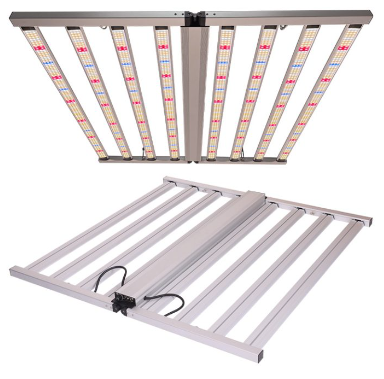
Growing Lion’s Mane mushrooms (Hericium erinaceus) can be an incredibly rewarding experience. These unique mushrooms not only boast a distinctive shaggy appearance but also offer numerous health benefits and culinary versatility. However, the key to a successful harvest lies in optimizing the fruiting stage. In this article, we’ll focus on the essential steps to enhance this critical phase, particularly through the use of plant grow lights.
1. Understanding the Fruiting Stage
The fruiting stage is when Lion’s Mane mushrooms develop their characteristic fruiting bodies. This phase requires specific environmental conditions, including appropriate lighting, temperature, and humidity. Using high-quality plant grow lights can significantly influence the success of this stage, ensuring robust and healthy mushroom growth.
2. Importance of Light in Mushroom Cultivation
Light is a crucial factor in the growth of mushrooms. While mushrooms do not photosynthesize like plants, they require light to trigger the fruiting process. The right spectrum of light can stimulate mycelium development and enhance the overall growth of the Lion’s Mane mushrooms.
3. Choosing the Right Plant Grow Lights
When selecting LED grow lights for your Lion’s Mane cultivation, consider the following factors:
Full Spectrum Light: Opt for full-spectrum grow lights that mimic natural sunlight. This type of light includes all wavelengths necessary for optimal mushroom growth, particularly red and blue light. Red light is especially effective for promoting fruiting.
Adjustable Light Spectrum: Some advanced plant grow lights offer adjustable spectrums. This feature allows you to change the light settings based on the growth stage of the mushrooms, maximizing growth potential.
Energy Efficiency: High-efficiency LEDs not only save energy but also produce less heat, reducing the risk of overheating in your growing environment.
4. Optimal Lighting Conditions for Fruiting

Light Duration: Provide approximately 12 hours of light per day during the fruiting stage. This consistent light schedule signals to the mycelium that it is time to develop fruiting bodies.
Light Intensity: Maintain moderate light intensity to prevent overheating or causing stress to the mushrooms. An optimal light level will promote healthy growth without leading to leggy or poorly formed fruiting bodies.
Monitor Growth Response: Regularly observe the growth of your mushrooms and adjust the light conditions as needed. If you notice elongated stems or pale colors, it may be time to increase the light intensity or duration.
5. Temperature and Humidity Control
Alongside proper lighting, maintaining the right temperature and humidity levels is critical for the fruiting stage of Lion’s Mane mushrooms.
Temperature Range: Keep the temperature between 18-21°C (65-70°F) for optimal fruiting. The ideal temperature supports the development of robust and flavorful mushrooms.
Humidity Levels: Aim for a humidity level of 90-95% during this stage. High humidity is essential for the formation of healthy fruiting bodies. Consider using a humidifier or misting system to maintain these conditions.
6. Utilizing Grow Lights Effectively
The use of plant grow lights not only provides necessary illumination but also plays a role in regulating the environmental conditions for your Lion’s Mane mushrooms. Here’s how to maximize the benefits:
Placement: Position your grow lights at the correct distance from the mushrooms. Too close can cause overheating, while too far may not provide enough light intensity. A distance of 12-24 inches is typically effective, but adjust based on your specific lighting system.
Reflective Surfaces: Utilize reflective materials around your growing area to enhance light distribution. This practice helps ensure that every mushroom receives adequate light, promoting even growth.
Regular Maintenance: Keep your grow lights clean and functional. Dust and debris can reduce light output, so regularly check and clean the fixtures to ensure maximum efficiency.
7. Final Thoughts
Successfully growing Lion’s Mane mushrooms involves careful attention to the fruiting stage. By leveraging the benefits of plant grow lights, you can create an ideal environment for your mushrooms, resulting in a bountiful and high-quality harvest. If you’re looking for high-performance plant grow lights or need tailored solutions for your mushroom cultivation, contact us at Andy Photoelectric. We are here to help you achieve your mushroom-growing goals with our innovative lighting solutions.






























